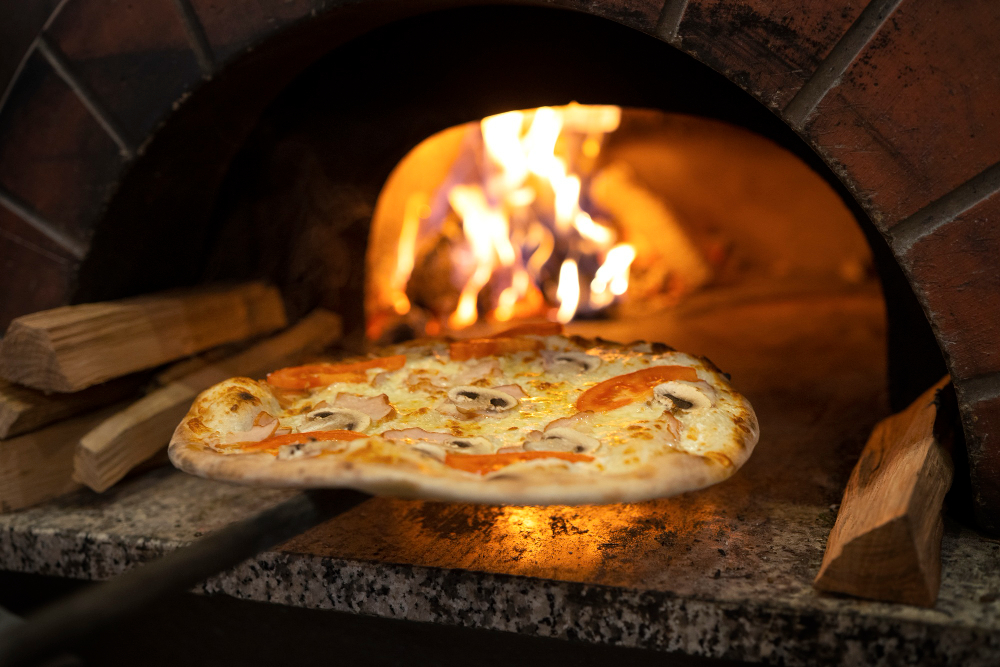Pizza, one of the world’s most beloved dishes, has been perfected over centuries. However, it’s the wood-fired pizza crust that steals the show for many aficionados. Crafting that perfect crust, kissed by fire and infused with a smoky aroma, is nothing short of art. This guide delves deep into the best wood-fired pizza crust techniques, unveiling secrets that can transform your baking game.
Best Wood-Fired Pizza Crust Techniques
Creating a top-notch wood-fired pizza crust requires understanding of both technique and ingredients. Here’s an exhaustive guide on mastering the crust.
Choosing the Right Flour
The type of flour you use will dictate the texture and flavor of your crust.
- All-Purpose Flour: An accessible choice for many, it lends a medium texture.
- Bread Flour: Higher protein content, resulting in a chewier crust.
- Tipo 00 Flour: A fine Italian flour that’s perfect for thin crusts with a light, airy texture.
Hydration Matters
Water plays a crucial role in determining your crust’s texture.
- Low Hydration: Results in a denser crust.
- High Hydration: Yields a softer, airier crust. It’s slightly challenging to handle but worth the effort.
The Slow Fermentation Magic
Allowing your dough to ferment slowly in the refrigerator enhances its flavor profile.
- Benefits: Develops a complex taste, makes the dough easier to shape, and improves the crust’s color.
Shaping and Hand-Stretching
Avoid using a rolling pin. Instead, hand-stretch your dough.
- Technique: Start from the center, pushing outward. Use your fingers to form a rim.
Read More: Vegan Pizza Options with Creative Toppings
Wood Matters
Different woods impart distinct flavors.
- Oak: A mild flavor suitable for most pizzas.
- Cherry: Sweet and fruity, perfect for white pizzas.
- Hickory: Strong and smoky, ideal for pizzas with robust toppings.
Oven Temperature Insights
A wood-fired oven can reach extremely high temperatures, essential for a crispy crust.
- Optimal Temperature: Between 850°F to 900°F for most pizzas.
The Right Tools for Perfection
- Pizza Peel: For placing your pizza into the oven.
- Infrared Thermometer: To check the oven’s temperature accurately.
Importance of Pre-Baking
Sometimes, pre-baking the crust for a few minutes ensures an even cook, especially for topping-heavy pizzas.
Seasoning the Crust
A brush of olive oil, sprinkle of garlic powder, or a dash of herbs can elevate your crust’s taste.
Watching the Bubbling
Bubbles can be a sign of well-fermented dough. However, massive bubbles should be popped to ensure even cooking.
Post-Bake Brushing
A post-bake brush with garlic-infused oil or melted butter adds flavor and shine.
The Role of Salt
Salt strengthens the dough and enhances flavor. Always opt for sea salt or kosher salt.
Sugar or No Sugar?
While purists might frown, a pinch of sugar can promote browning and add a slight sweetness.
The Oil Debate
While not traditional, a dash of olive oil can make your crust crispier.
Exploring Sourdough
A sourdough base offers a tangy flavor and chewy texture, making it a delicious option for wood-fired pizzas.
Read More: 10 Essential Tips for Achieving Crispy Crust at Home
FAQs
What is the best flour for a wood-fired pizza crust?
Tipo 00 flour is often considered the gold standard for wood-fired pizza crusts due to its fine texture and the crispy crust it yields.
How hot should a wood-fired oven be for pizzas?
Ideally, between 850°F to 900°F. However, it can vary based on the type of pizza and desired crust.
Why is my pizza crust too tough?
Overworking the dough or not allowing adequate fermentation can lead to a tough crust.
Can I use store-bought dough for wood-fired pizzas?
Yes, but for best results, modify its hydration and let it undergo slow fermentation.
How long should pizza dough ferment?
For wood-fired pizzas, allowing the dough to ferment in the fridge for 24 to 48 hours yields the best results.
Why is wood-fired pizza crust considered superior?
The high heat and smoky flavor from the wood contribute to a unique texture and taste that’s hard to replicate in conventional ovens.
Conclusion
Crafting the perfect wood-fired pizza crust is a blend of science and art. It’s about understanding ingredients, mastering techniques, and a whole lot of love and passion. With the above techniques in hand, you’re well on your way to creating pizzas that would make even Italian nonnas nod in approval.



